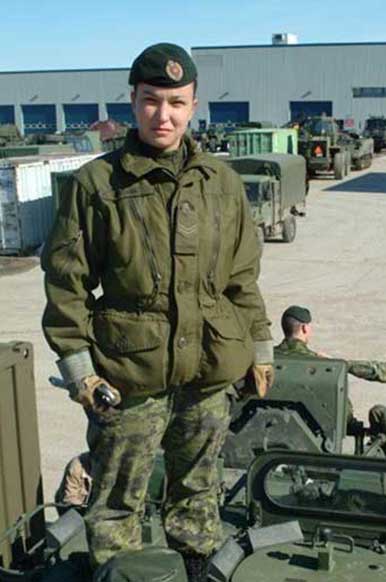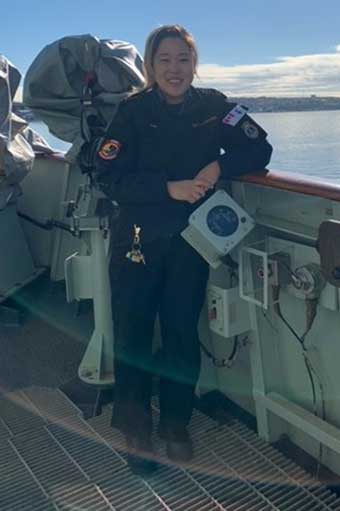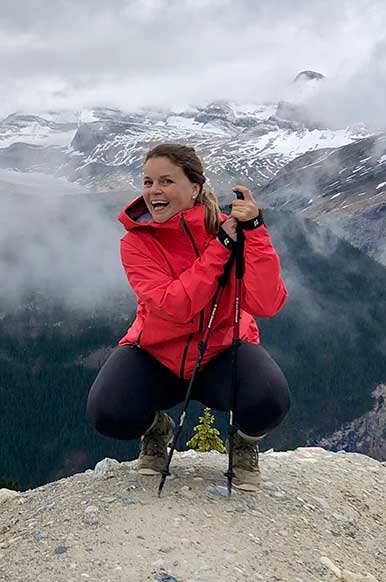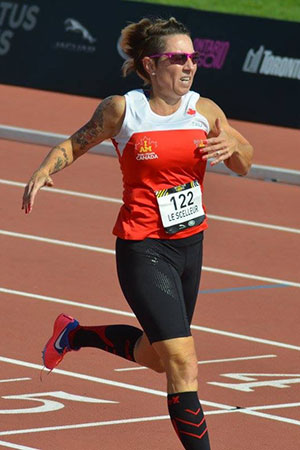Master Corporal (Ret’d) Marc Bergeron
Marc Bergeron has seen just about everything through the lenses of the cameras that he wielded for the Canadian Armed Forces (CAF) during his very eventful career. While photography has been Bergeron’s passion since he was 15 years old, it now also plays a key role in his efforts to heal from the effects of post-traumatic stress disorder (PTSD).
Gulf War Balkans Haiti Kosovo

Joined
1984
Postings
- Halifax, NS (1984-89)
- Ottawa, ON (1989-2002)
Deployments
- Gulf war, 1991
- Bosnia, 1994-95
- Haiti, 1995
- Kosovo, 1995 and 1998.
When he decided to join the CAF in September 1984, Marc Bergeron had already completed his diploma of college studies (DEC) in photography. He craved adrenaline and adventure: "I’m always on the move. I can never sit still."
In 1984, Marc was 23, and had almost reached the maximum age (at the time) for joining. Because he already had his DEC, he became a photographer straight away at the Halifax naval base without having to take training for a trade.
Adventure called three years later when he was chosen by the Canadian admiral of the Standing Naval Force Atlantic for a one-year mission to film and photograph the at-sea operations of NATO vessels.
Less than two years after his ocean journey, Bergeron left Halifax to join the one hundred photographers who worked under the command of the photographers’ Headquarters in Ottawa. The team travelled across Canada to produce documentaries and promotional material for the CAF.
In August 1990, Canada announced that it would join a coalition of more than 35 countries to liberate Kuwait. Bergeron was one of two corporals chosen to be part of the public affairs team.
“Weapons were at the ready to protect the airport. The CF-18 fighter aircraft were armed. It was from there that Canada fired its first Sparrow missile at an Iraqi frigate.”
After setting up an editing suite and documenting operations at the Canadian Headquarters in Bahrain, Bergeron went to Qatar, where he had his first brush with the reality of war: "Weapons were at the ready to protect the airport. The CF-18 fighter aircraft were armed. It was from there that Canada fired its first Sparrow missile at an Iraqi frigate."

Marc Bergeron with his Betacam – Photo courtesy of Master Corporal Serge Morin.
However, that was just the beginning. Next, Bergeron travelled to the brand-new Canadian campaign hospital at Al Qaysumah, in Saudi Arabia. In addition to his work as a photographer and videographer, Bergeron rolled up his sleeves to help: "When we arrived, the hospital was not yet built. We dug holes, we put up tents at night like everyone else."
When the cease-fire came into effect, the post-war scenes at the hospital deeply affected Bergeron. The hospital was operating at full capacity with wounded Iraqis arriving by the dozens in all kinds of conditions: "Our work no longer involved only documenting, but in fact filming amputations, filming operations on people who’d been shot, who had shrapnel in their brain, so that the videos could be used in the NATO and CAF schools. There hadn’t been images like that since the Korean War."
“I was a young corporal, I’d never seen battle in my life. I never imagined I’d see such things. Well, I was quickly disillusioned, because I realized that not only were they not elite soldiers, but they were the same age as my father and they had been conscripted.”
Bergeron doesn’t hide the fact that he was ill filming some of the surgical procedures. The prisoner’s camp, located a few kilometres from the hospital, also left him with serious emotional scars. "I was a young corporal, I’d never seen battle in my life. I never imagined I’d see such things. Well, I was quickly disillusioned of that idea, because I realized that not only were the prisoners not elite soldiers, but they were the same age as my father and they had been conscripted."
He returned from the Persian Gulf in March 1991. One year later, he found himself grappling with night terrors and anxiety. It was the beginning of a long fight with PTSD, which at the time was called "combat fatigue."
Despite this, he was deployed again in 1994, this time to Bosnia. His troubles were far from over, as he was taken prisoner by Serbian forces while performing his duties, at Ilijaš, some 15 km from Sarajevo. He was kept in detention for 16 days in less-than-salubrious conditions before being released. His PTSD symptoms grew worse. And yet, two more involuntary deployments abroad followed.
After 18 and a half years of service, Bergeron was discharged for disability in 2002, when the seriousness of PTSD symptoms was better understood and recognized by the CAF. Today, he enjoys being behind the camera again and volunteers his photographic skills on a regular basis.
"The thing that caused me so much hardship is also what saved me. I fight a battle every day. Every morning that I open my eyes and see the sun, I’m happy."
With courage, integrity and loyalty, Marc Bergeron has left his mark. He’s one of our Canadian Veterans. Discover more stories.
If you a Veteran, family member or caregiver in need of mental health support, the VAC Assistance Service is available to you 24/7, 365 days a year at no cost. Call "1-800-268-7708 to speak to a mental health professional right now.
Where they served
- Date modified:


















